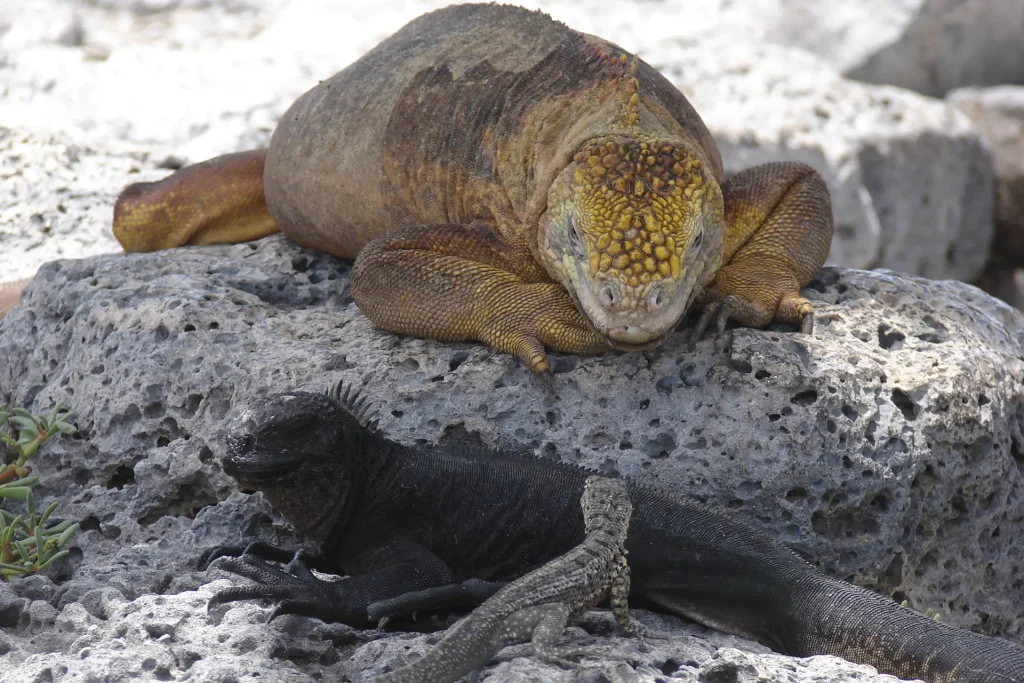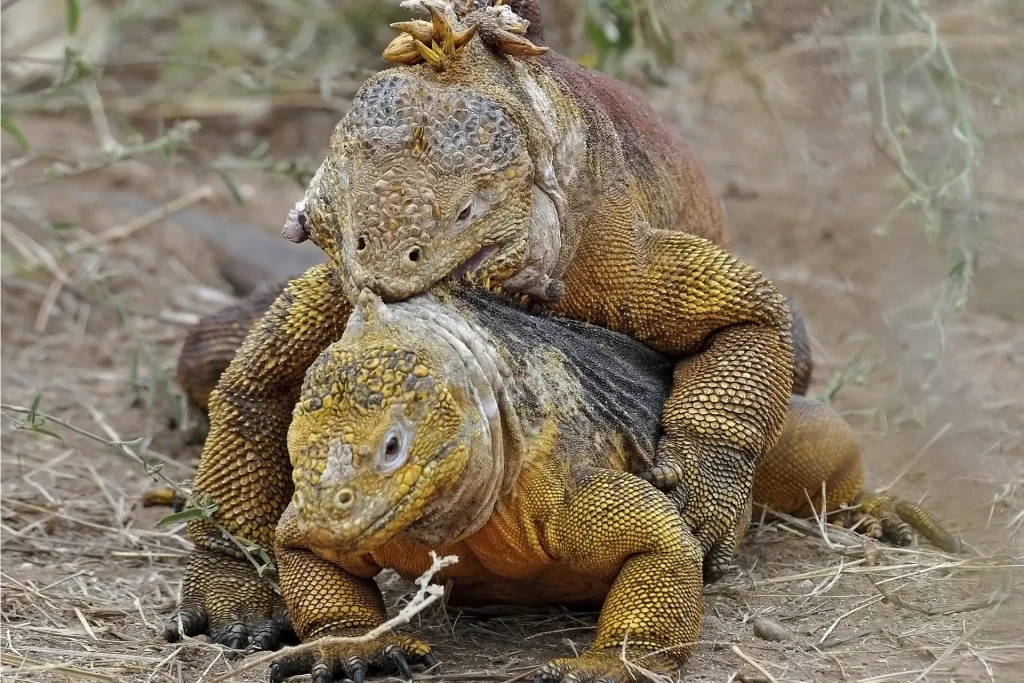Yellow land iguanas ( Conolophus Subcristatus) are found on the Galapagos Islands. These large lizards can live up to 70-years in the wild. We must continue to intensify our efforts as we learn more about this fascinating creature. At Galapagos Conservation we are committed to protecting this incredible species in order to ensure its survival. The story of Yellow Land Iguanas is both a testament to the species’ resilience and a call to protect this incredible treasure.
Population and Distribution
Effective conservation requires that we know where and how many Yellow Land Iguanas are still alive. Information about the size of their populations, their habitats, their movement patterns and the connections between them helps us to develop better management strategies. We can also focus conservation efforts on the most important populations by identifying specific threats.
Yellow land iguanas are one of the three land iguana species found in Galapagos. They can be found nowhere else on Earth. The pink land iguana is the other species. The other two are the pink land iguanas (C. pallidus). Yellow land iguanas can be found on Isabela, Baltra, Fernandina, South Plaza, Santa Cruz, and Santiago Islands. Land iguana populations have declined throughout their range because of habitat destruction by goats and carnivores like feral cats and dogs. However, they still thrive on South Plaza Island and North Seymour Island where they were originally introduced from Baltra Island almost 90 years ago.
Successes in conservation and reintroduction
The land iguana on Santiago Island was exterminated by the middle of the 19th century. Charles Darwin reported the last sighting during his 1835 visit. It was feral pigs that were a major factor in the extinction of this species. Feral pigs were eradicated only in 2001. Since 2019, 3,143 Iguanas from North Seymour Island have been slowly introduced back to Santiago Island in order to restore this species and help the island to be restored.
Baltra Island was once home to a large population of yellow land Iguanas. They were known as the largest of their species. In the early 20th Century, however, this population decreased due to habitat destruction by feral goats introduced. During World War II, the situation became worse with the construction of an American military base on Balta. This led to the total disappearance of the iguanas.
In 1932-1933, the Baltra iguana population was decimated. Seventy iguanas, located just a half-mile away, were relocated to North Seymour. The American magnate William Randolph Hearst arranged this transfer. After noticing the decline of iguanas, and vegetation on Baltra due to goats, he decided to relocate them. This helped to prevent the extinctions of Baltra’s iguanas.
Baltra was repopulated in 1991 using iguanas that were bred from North Seymour during the 1980s. The program was a success: around 3,000 iguanas now live on Baltra.
Diet and Adaptations
Galapagos Land Iguanas are mostly herbivores. They feed on the green grasses and flowers of small shrubs and herbaceous plants. Invertebrates such as centipedes and spiders are also known to be eaten by these animals. Land iguanas are hydrated by eating Opuntia and other succulent plants.
Look Ahead
The Galapagos yellow land iguana is a symbol of resilience. It has adapted to and survived a difficult environment. Conservation efforts have enabled the species to start recovering and thrive in some places despite threats such as habitat loss and competition with invasive species. Galapagos Conservancy recognizes that protecting this species is a complex process, requiring research into its population, distribution and impact of invasive species. To preserve their habitats, and ensure their survival, it is essential to collaborate with the Directorate of Galapagos Park and others. It is vital that we protect this iconic species, and maintain its role as the cornerstone of Galapagos biodiversity for future generations.




